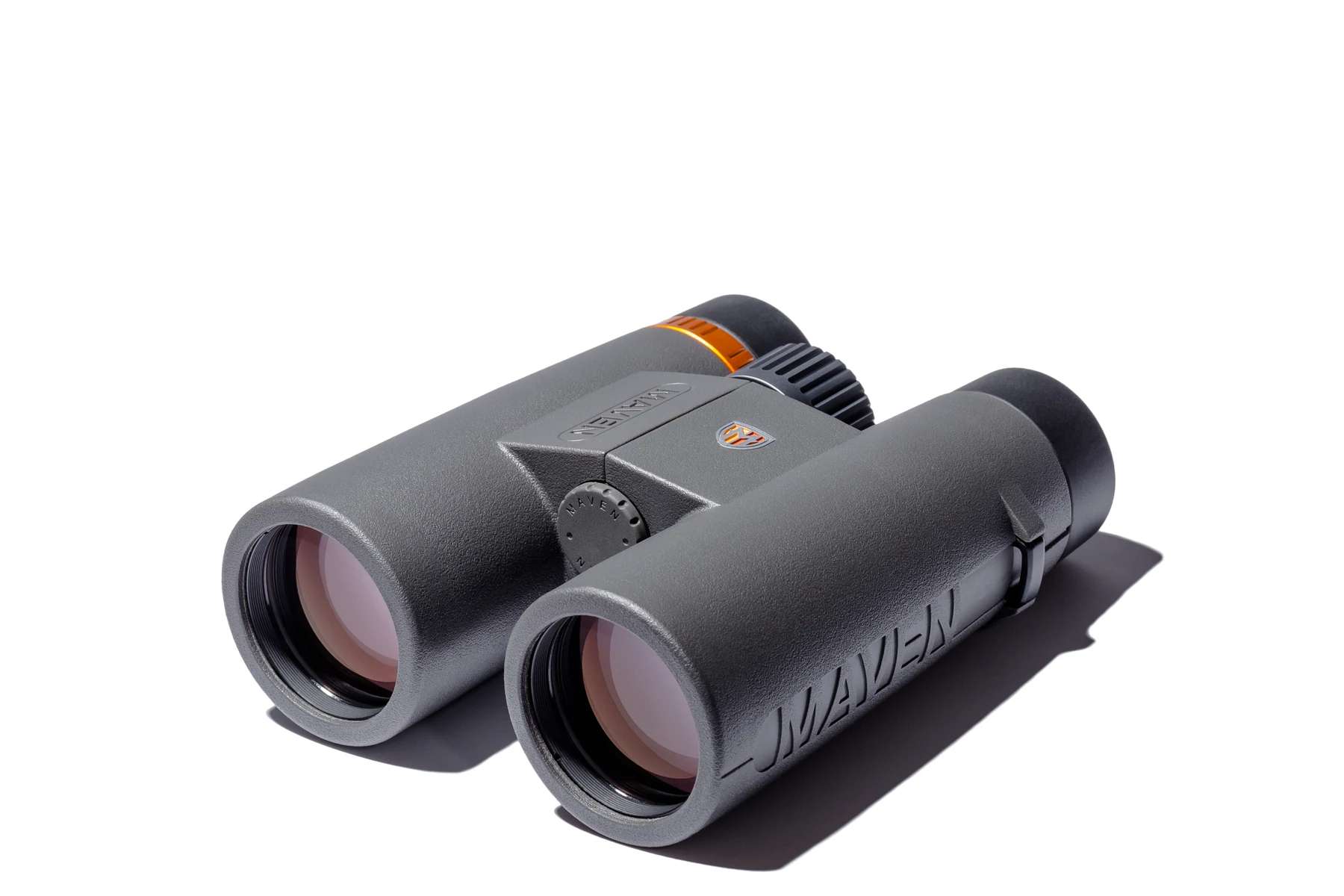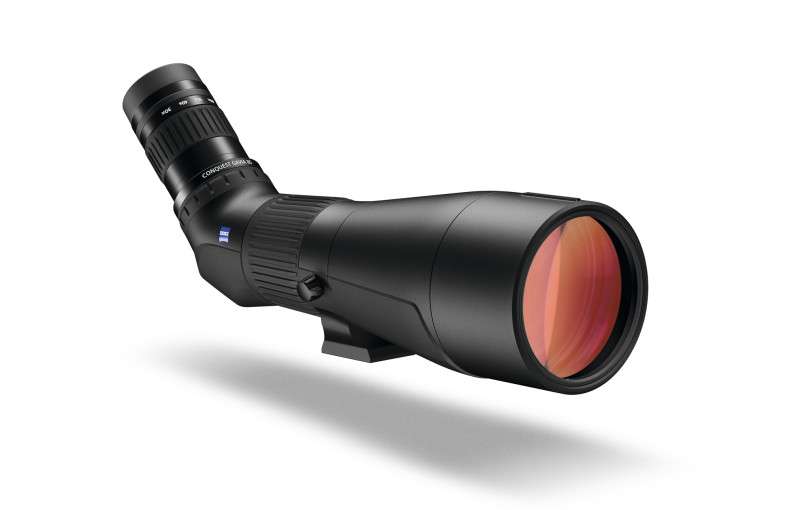The most important tool for wildlife observation is a quality optic device. For most people that’s either binoculars or a spotting scope. Which you choose depends on the type of observations you’re anticipating and the situation you’ll be in. Here’s our advice on when to choose binoculars and when to use a spotting scope.
Learn More About Spotting Scopes or Learn More About Binoculars.
There’s little argument for using a high-grade scope if you’re on a walk, trek or longer expedition. If you’re not going to stop for more than 20 minutes, a scope is a lot to set up and pack down every time, let alone carry around.
Binoculars are extremely portable and easy to use on the move. They’re relatively lightweight and can be worn on a neck-strap for quick access.
Best Compact Binoculars: Maven C1 Compact

Binoculars can provide a much wider Field of View than spotting scopes. Most binoculars have magnifications between 8x-15x, whereas scopes are more likely to magnify up to 45x.
The impact is that binoculars show around 100m of a landscape at 1000m, whereas a scope will show around 20m at the same distance. Higher magnification leads to a narrower field of view.
Best Binoculars for Field of View: Zeiss Victory Pocket Binoculars
Binoculars don’t require much set-up. Adjust them to a comfortable width and turn the dial to focus each time. Scopes are generally more expensive, difficult to maintain and used with a tripod, which can be a lot for someone just starting, whether as a birdwatcher or a general nature enthusiast.
By using both eyes, binoculars also reduce eye fatigue over long periods.
Best Binoculars for Beginners: Zeiss Terra ED
Spotting scopes are excellent for observing wildlife at long ranges. You might be watching across a large field, a body of water or a valley. The magnification available with a spotting scope is much higher than with binoculars, often up to 60x.
For example, people spotting seals on coastal islands usually stay in one spot and look out over the water at least 800m. Binoculars might let you see the shape and movement of seals, but a spotting scope will be more likely to show you their facial features and behaviour.
Best Scope For Distance Viewing: Zeiss Victory Harpia 22-65x85
When birding from a hide, a viewing platform, or a stationary position, a spotting scope is ideal. Most users mount scopes on tripods to keep them stable, which can be cumbersome if you’re on the move.
Viewing from one place has a lot of advantages for scope users. With a large objective lens, 50mm diameter or higher, spotting scopes provide more detailed observation, even to individual feathers or markings at closer distances.
To identify the precise species, you need to see close detail. The large objective lens of a spotting scope lets in plenty of light to help you see different colour markings and variations in shape. High magnification will also give you a clear view.
For example, you typically see raptors and birds of prey flying high above or diving for prey at a distance from any humans. Key identifying features include feather markings on the underside of the wings, as well as head shape and beak shape. When backlit by bright skies, the wing markings are in shadow, so you need a scope that provides high contrast.
Choose a scope with a wide objective lens and quality lens coatings to get as much light and contrast as possible.
Best Scope for Detail: Zeiss Conquest Gavia 85

Spotting scopes allow enough stability and clarity to use together with a camera or smartphone. Known as digi-scoping, this practice involves placing the camera lens close to the eyepiece and taking pictures through the scope. This essentially gives you a long-lens camera.
Digital cameras also let you view the image on the screen, so you can avoid craning over the scope for long periods.
Choose a scope with a large objective lens and good focal length for the best results. An angled eyepiece also helps you look at the image more easily, and variable magnification can give you more control.
Best Scope for Digiscoping: Maven CS 1 A
Choose your day optics based on how you will use them. There are many ways to watch wildlife, whether birdwatching or conducting biodiversity research. Binoculars and spotting scopes are very different tools, suited for different situations.
It’s worth saying that spotting scopes are generally more expensive than binoculars because the larger lens size requires higher-quality glass, more materials and more powerful prisms.
Choose binoculars for observing on the move, wide field of view and beginner observations. For wildlife photography, close detail and long-range viewing, choose a spotting scope.
Browse Binoculars | Browse Spotting Scopes

WildlifeCam Ltd is a credit broker, not a lender, and is authorised and regulated by the Financial Conduct Authority No 997540
We do not charge for credit broking services, we introduce you exclusively to Klarna
Shop and pay the Klarna way - join 150 million customers and choose flexible payments, lightning-fast checkout and secure shopping at WildlifeCam Ltd.
For more information please click here.